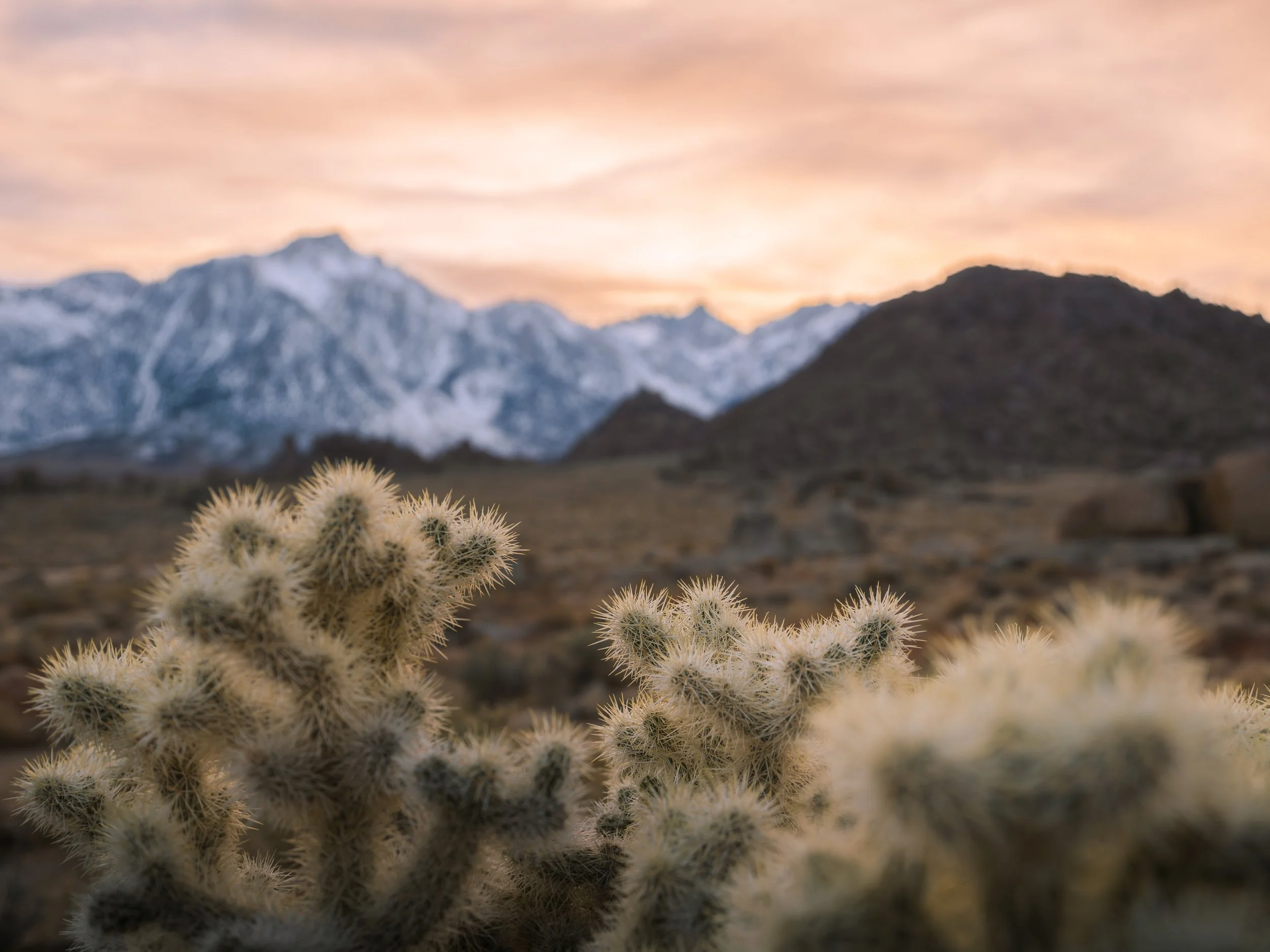Mastering Color Theory: A Guide for Landscape Photographers
Sunset in Alabama Hills
Embarking on a journey into landscape photography can be both exciting and challenging, but understanding the fundamentals of color theory can significantly elevate your images. The world is a canvas of vibrant hues, and harnessing the power of color can breathe life into your landscapes. In this guide, we'll delve into the basics of color theory and explore how you can use it to enhance your photography and post-processing skills.
1. Understanding the Color Wheel
The color wheel is the foundation of color theory, offering a visual guide to the relationships between different hues. Photographers can make informed decisions about color combinations in their compositions by grasping the basics of primary, secondary, and tertiary colors. This knowledge empowers photographers to create visually appealing images by strategically selecting and harmonizing colors within their landscapes. In my free e-book, I provide more information about using color theory.
Consider exploring the psychological impact of colors as well. Each color evokes distinct emotions—reds and yellows can convey warmth and energy, while blues and greens often evoke tranquility and calmness. Awareness of these associations enables photographers to convey specific moods or atmospheres in their landscape images, adding an emotional dimension to their work.
2. Harmony and Contrast
Harmony and contrast are pivotal elements in creating compelling compositions. Harmonious color schemes contribute to a sense of balance and unity in an image. Analogous colors, found next to each other on the color wheel, create a soothing and cohesive visual experience. This can be particularly effective in serene landscapes, such as a peaceful sunset over a calm lake.
Contrast, on the other hand, injects dynamism and focal points into your compositions. You can create a striking visual impact by strategically placing complementary colors—those opposite each other on the color wheel. This technique is especially powerful when emphasizing specific elements within a landscape, such as a vibrant red barn against a lush green field.
3. The Impact of Color Temperature
Understanding the nuances of color temperature is essential for landscape photographers, as it profoundly influences the mood and atmosphere of an image. The golden hour, characterized by warm tones during sunrise and sunset, bathes landscapes in a soft, ethereal glow. This period allows photographers to capture the magic of changing light conditions, adding a layer of storytelling to their images.
Conversely, the cool light of early morning or late evening can create a serene, introspective mood. Being attuned to these shifts in color temperature allows photographers to adapt their compositions to the changing light, resulting in images that resonate with the viewer on a visceral level.
4. Post-Processing Techniques
Post-processing has become an integral part of a photographer's workflow in the digital age. Understanding color theory in post-processing enables photographers to fine-tune their images and enhance the impact of their compositions.
White Balance: Adjusting the white balance in post-processing allows photographers to correct or enhance the color temperature captured in the camera. This control over an image's overall warmth or coolness can be instrumental in conveying the intended mood.
Color Grading: Selectively adjusting colors in specific areas of an image enhances the visual hierarchy. This technique guides the viewer's gaze, ensuring that the most critical elements receive the attention they deserve.
Split Toning: Split toning allows photographers to independently add subtle color nuances to the highlights and shadows. This technique enhances the depth and mood of a landscape, creating a more nuanced and visually engaging photograph.
Vibrance and Saturation: Careful adjustments to vibrance and saturation levels enable photographers to fine-tune the intensity of colors. This control is crucial for avoiding overly saturated or muted tones, ensuring a balanced and visually pleasing result.
Conclusion
Mastering color theory as a landscape photographer is not just about creating aesthetically pleasing images; it's about conveying emotions, telling stories, and connecting with your audience on a deeper level. By embracing the principles of the color wheel, harmony, contrast, and color temperature, photographers gain powerful tools to elevate their craft. Experimentation with these concepts in both the field and during post-processing will lead to a more profound understanding of the art and science of color in landscape photography. Happy shooting!

